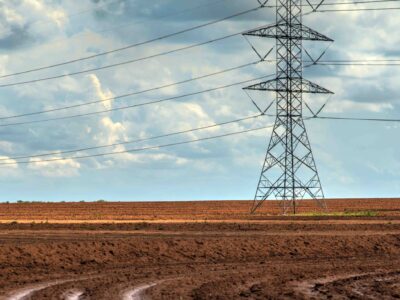A new coalition of tech giants, automakers, and clean-energy technology developers have partnered to showcase how electric vehicles (EVs) offer more than just a method of clean transportation. Known as the Virtual Power Plant Partnership (VP3), companies like Ford, Google, GM, SunPower, and Sunrun are producing data and statistics that prove EVs can be independent power plants run on renewable energy.
EVs can essentially serve as backup power generators with large, powerful batteries. Thanks to vehicle-to-grid technology (V2G), electric cars can return energy to the state or national power grids with a charging station. As a result, the grid becomes more stable and less at risk of not meeting energy demands. This capability earns EVs the title of virtual power plants (VPPs) that function as a distributed energy resource.
“Virtual power plants present an exciting opportunity to unlock additional value for homes, businesses, and communities, helping to drive greater energy independence and grid decarbonization,” said Mark Bole, GM vice president and head of V2X and battery solutions, in a press release.
How does it work? The VP3 project uses the V2G technology but on a much larger scale. EVs act as the power plant, harnessing energy from charging stations. It should be noted many sites use renewable energy.
Thus, EVs could capture and store solar or wind power, then send it back to the grid, using clean energy to charge cars and power homes.
By drawing power from V2G during peak electricity demand, homeowners can save money on energy costs, especially as more utility companies roll out incentives to switch to renewables. In addition, VPPs are resilient to extreme weather. That makes them more reliable than standard electrical grids.
Homeowners not only save money on energy costs but reduce air pollution from less power being generated by oil or coal. It’s estimated VPPs can reduce energy expenditure by $17 billion in 2030. By then, the technology will be more efficient and widely used.

Photo Courtesy RMI
Ford, Google, GM, and other major companies believe in this technology. They’ve committed to scaling up standards for more VPP systems. Along with clean energy policy firm Rocky Mountain Institute (RMI), VP3 will share insights and data to further V2G use and VPP technology in the U.S. RMI will compile these companies’ findings and present information on the greatest benefits, best practices, and policy suggestions.

Photo Courtesy Chevrolet
“Our analysis shows that VPPs can reduce peak power demand and improve grid resilience in a world of increasingly extreme climate events,” said Jon Creyts, RMI CEO. “A growing VPP market also means revenue opportunities for hardware, software, and energy-service companies in the buildings and automotive industries.”
As power grids struggle to cope with rising temperatures and worsening weather conditions, it makes sense to transition away from relying on two or three utility companies to provide power for everyone. VP3 will be able to “show that EVs can become a reliable asset to the retail utility and or the retail transmission operator” and EVs “can be an asset to a homeowner and fleet customers,” Rob Threlkeld, director of global energy strategy at GM, told Reuters.
If VPPs become readily available, the emissions reduction can be tremendous. Early estimates indicate 44 million to 59 million tons of carbon dioxide could be reduced by 2050. As EV popularity increases, so too will cars with V2G capabilities.
“The next 12 to 24 months are critical for policy and program development to seize the potential offered by virtual power plants, and VP3 is here to ensure that the energy transition doesn’t miss a beat,” said Mark Dyson, RMI managing director for carbon-free electricity.





